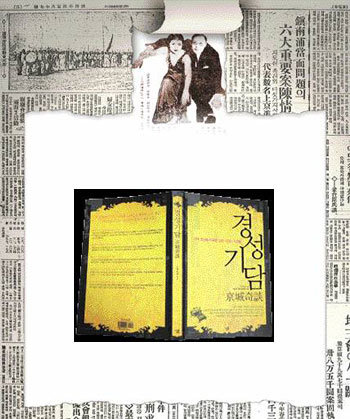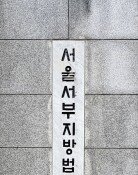Past Glimpses

Who says it is acceptable that a teacher plays cards with his students for kisses? Your principal was intoxicated by and kissed and kissed his students and . (from A Card Game, Lee Ah-bus novel in 1934 published in Byeolgeongon).
This bizarre flower card game was not a product of the storytellers imagination, but a real occurrence. The story is about the big scandal of Principal Park Hee-do, one of the 33 major participants in the March 1 Liberation Movement. According to the story, Park was accused of playing a card game for kisses with his female students and thus of sexual harassment.
Later, it was revealed that Park, once respected for his involvement in the liberation movement, was, in fact, one of the most corrupt Japanese sympathizers during the Japanese colonial period. However, very little is recorded on his big scandal, which was so shocking in those days. Author Lee Sang-gyeong explains about this scarcity of records on the scandal, saying, Back then, sexual harassment was a bigger taboo than collaboration with Japan in the community of the humanities.
Very few are more telling about individuals and societies than scandals and murders. This book named Gyeongseong gidam(weird story) is quite a sensational documentation of life in contemporary Korea written by Lee Sang-gyeong, an expert on Korean literature and professor at KAIST. His book is based on the authors opinion that the humanities should not put a cover on private lives. In his book, the professor allows readers feel what it was like living in contemporary Korea at the time by digging into the private lives of social dignitaries and murders.
The book includes four murder cases and six scandals, all of which were reported about 10 times in papers and magazines during the colonial rule, but received little more than brief mention by historians. The book is an easy read because the author did not attempt an abstract analysis of facts.
The real-life cases touched upon in the book shows that colonial rule was a period with more complexity than some might want to attach. It tells that the simplistic distinction between those who fought for independence and those who cooperated with Japan is not an all that accurate measure of the times. The author very vividly depicts contemporary Korean society in his book. The corrupt aristocracy chose to be heavily indebted in order to lead extravagant life. Corpses were secretly buried in the outskirts of Seoul. The lowest of the lower class died because of their blind belief in superstitions and ignorance while some women were ahead of their times.
The author blurred the line between historical facts and his interpretation of them in his book. The dismal stories told happened during the Japanese colonization, but the author is very good at making readers feel that they are still relevant.
The slaughter of nearly 100 followers by their cult leader in 1937 bears an eerie resemblance to the Odaeyang incident occurred in late 1980s. Yoon Taek-young, father-in-law of King Sunjong enjoyed a very luxurious life while insisting, all I have is 300 won. His shameless assertion reminds us of a former president who reported a few years ago that his assets were less than 300,000 won.
In 1931, a Japanese housewife living in Busan made her lover kill her Korean maid because she knew that her mistress was having an affair. But the suspects were all acquitted of the murder charge, and the case remained unsolved one forever. Even in modern times, people are so familiar with cases in which perpetrators get away with their crimes or facts are distorted to serve the interests of those in power. The relevance of the book is perhaps attributable to some timeless features in human lives.
One story so bitterly relevant to todays Korean society is about the tragic life of Choi Young-sook. She returned home in 1931 with a degree in economics from Stockholm University.
She fell in love with an Indian man in Sweden and returned being pregnant with his child. That she was the mother of an illegitimate child, she could not find a job and had to sell bean sprouts. She was 27 years old when she died. She was a woman far ahead of her times, loved a foreigner and became pregnant with his child. Reading her tragedy, readers might recall the mother of the football star Hines Ward saying, If I had raised my son in Korea, we would be very miserable now. Readers of this book might ask themselves, Even decades later, will Koreans warmly embrace Choi?
After all the stories about prominent social figures private lives, readers may be freshly convinced that human beings are far from being simple both back then and now. The book tells about a talented musician during the Joseon era, who abandoned his ill wife and ran away with one of his students. More often than not, it is family life and integrity that ambitious leaders sacrifice to realize their noble visions. Yet, even the greatest of their visions or love are inevitably part of trivialities of our daily life. By the end of the book, the weird stories might not sound as bizarre as they have been at the beginning of the book.
Hee-Kyung Kim susanna@donga.com







